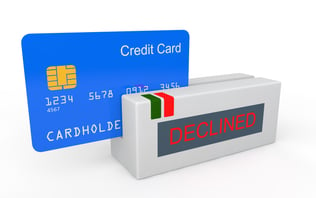What's Really Costlier: Undetected Fraud or False Declines?
67% of online merchants believe that undetected fraud is costlier than declining legitimate transactions. Only 33% believe otherwise. As it turns out, false declines are a bigger profit leak for online merchants than fraud itself.
It’s estimated that businesses lose 3% of their revenue due to false declines. Between now and 2023 ecommerce revenue is projected to total $14.3 trillion. At a 3% loss rate, false declines will cost ecommerce merchants $429 billion, while fraud will cost the them $130 billion. In short, false declines will cost merchants 3x more than fraud itself.
The market for fraud-prevention solutions and technologies is teeming with options. The same thing can’t be said for false declines detection. False declines don’t show in your Profit & Loss (P&L) statement. Therefore, without the conscious effort to track false declines, the problem can grow into a full-blown profit leak.
Knowing where false declines happen within the payment chain is important to pinpoint where a solution needs to be implemented. False declines can happen at any of the following stages:
- Payment gateway
Preset fraud filters run the first level of fraud checks on online orders. - Third-party fraud protection system
Fraud security vendors run additional security checks based on algorithms, machine learning, AI, risk database, etc. - Bank approval
The bank that issued the credit card runs additional security and authorization checks based on several factors. The bank either approves or declines the transaction.
Chances are you have a false decline problem. The severity may vary, but it should be addressed nonetheless—both to reduce your current rate and to make sure that your cybersecurity initiatives don’t eat into your profits in the future.
Here are 5 ways you can start the process of reducing false declines:
- Use a customized payment gateway
The preset filters of the current payment gateway you’re using may be too strict, causing a significant number of orders to be falsely declined. - Use a fraud prevention solution that utilizes artificial intelligence & machine learning
Threats evolve. Your fraud prevention system must ensures that you are only declining orders based on current threats, thus increasing your approval rate. - Consider increasing manual review
We're not talking only about the direct review of orders. It's even more important to have expert data scientists on hand who can train and refine your fraud system to stop threats and optimize payment acceptance. - Give more leeway to high risk orders
Don't be so quick to decline an order based on a single risky data attribute. - Tag approvals and declines
The more data you obtain, the more equipped you will be in identifying fraudulent transactions versus legitimate orders that were falsely declined.
Consider how your business could thrive if you were no longer constrained by the fear of fraud. If you're ready to begin reducing false declines and capturing more revenue, we're here to help. You can request a demo of our services here.
Vesta Corporation is a pioneer in processing fully guaranteed Card Not Present (CNP) payment transactions for e-commerce merchants. We offer scalable protection payment solutions and patented fraud protection services. We focus on protecting your revenue from chargebacks and fraud so you can focus on your company’s strategic growth.
.png)
.png)
%20(1).png)
.jpg?width=555&name=FalseDecline%20(2).jpg)


